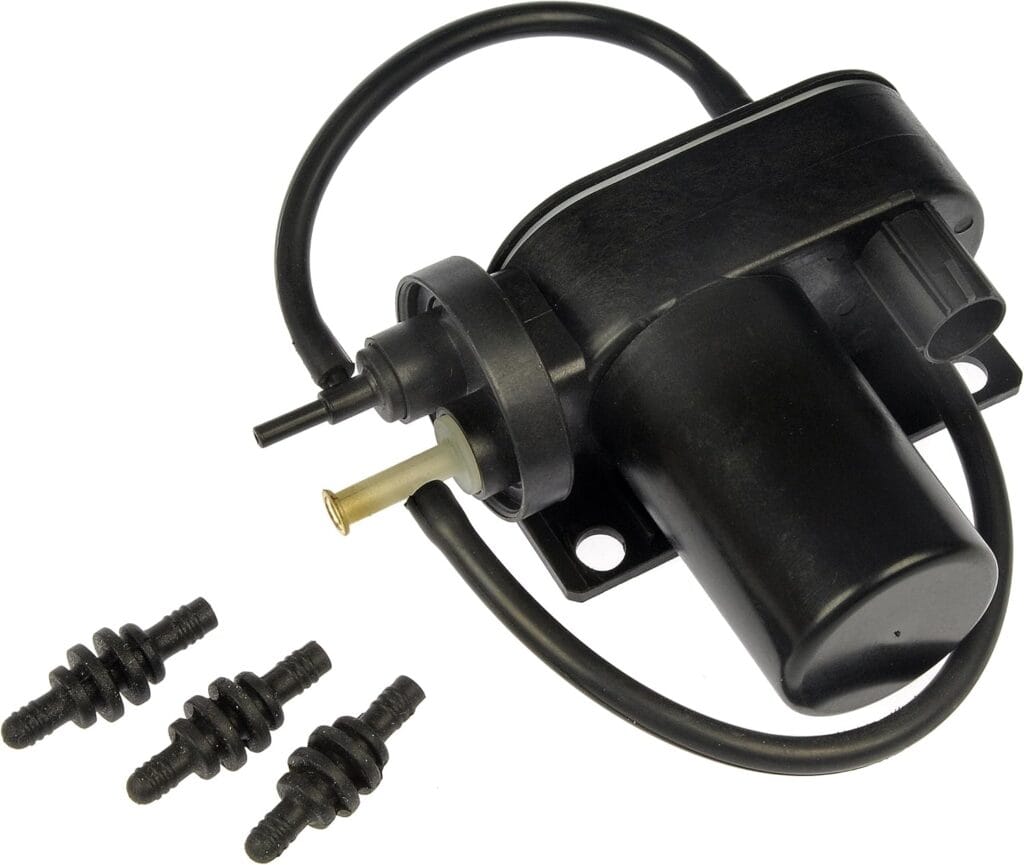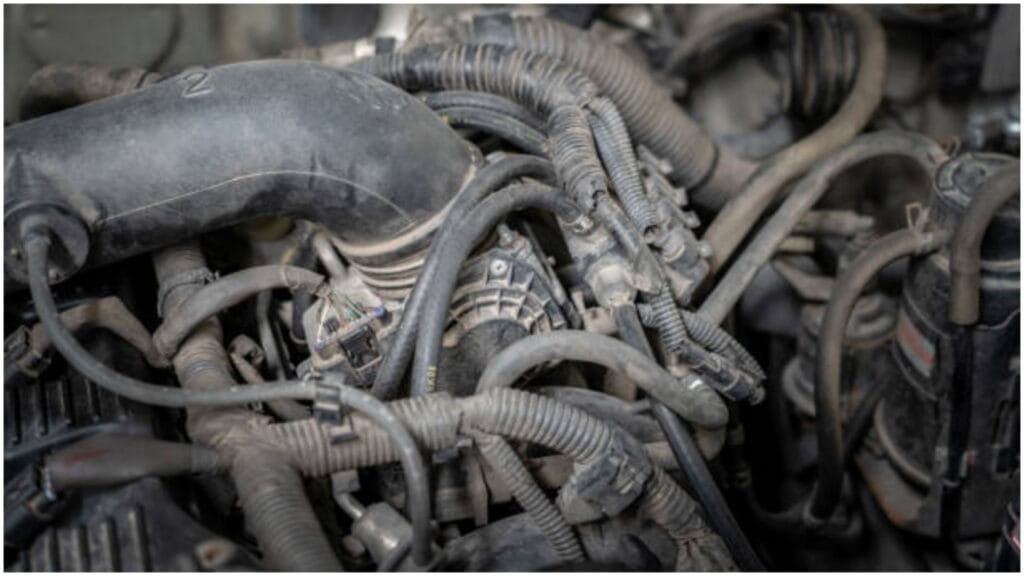When you encounter a brake booster vacuum leak, it’s crucial to understand its root cause and its implications on your vehicle’s braking system. This issue typically arises due to a failure in the vacuum seal that connects the brake booster to the engine’s intake manifold. This seal is vital because it allows the brake booster to receive the vacuum pressure necessary for power-assisted braking.
what is booster pump leak?
A booster pump leak is when water escapes from the pump’s housing or connections. This reduces water pressure and efficiency. You might see puddles, hear dripping, or notice your pump running constantly. Leaks waste water and can damage the pump or the surrounding area. Fix them quickly to prevent further issues.
Effects on Brake Performance
A vacuum leak in the brake booster can significantly affect your vehicle’s braking performance. Since the brake booster amplifies the force you apply to the pedal, any leak can lead to decreased brake assistance.
This results in a stiffer brake pedal feel, requiring more effort to achieve effective braking. Moreover, prolonged driving with a vacuum leak can compromise overall brake system functionality, posing safety risks.

Dorman 904-214 Vacuum Pump Compatible with Select Dodge / Ford Models
Common Causes of Vacuum Leaks
Several factors can contribute to a brake booster vacuum leak. One common cause is the deterioration of the vacuum hose or its connections over time. These components can wear out due to heat, pressure, or age, leading to cracks or leaks.
Another frequent culprit is a faulty check valve designed to maintain vacuum pressure within the brake booster. If this valve malfunctions, air can enter the system, causing a vacuum leak.
Signs and Symptoms
Identifying the signs of a brake booster vacuum leak is crucial for timely intervention. Symptoms often include a stiff or hard brake pedal, requiring increased pressure to stop the vehicle.
You may also notice a hissing sound when pressing the brake pedal, indicating air escaping from the vacuum leak. Additionally, irresponsible braking performance or longer stopping distances can signal underlying issues with the brake booster vacuum system.
Diagnosis and Testing
Diagnosing a brake booster vacuum leak involves a systematic approach to pinpoint the exact source of the issue. Mechanics typically perform a vacuum pressure test using specialized equipment to measure the integrity of the vacuum system.
This test helps identify leaks and assess the overall condition of components such as the vacuum hose, check valve, and brake booster.
Repair and Replacement
Repairing a brake booster vacuum leak often involves replacing the damaged components responsible for the leak. This process may include replacing the vacuum hose and check valve or repairing the vacuum seal between the booster and the intake manifold.
In some cases, cleaning or reseating components can resolve minor leaks. However, if the damage is extensive or the components are worn beyond repair, a complete replacement may be necessary to restore optimal brake performance.
Preventive Maintenance

Regular maintenance and inspection are essential to mitigate the risk of brake booster vacuum leaks. Routinely checking the condition of vacuum hoses, seals, and valves can help detect potential issues early.
Promptly addressing any signs of wear or deterioration can prevent leaks from developing and ensure consistent brake performance.
Incorporating these preventive measures into your vehicle maintenance routine can enhance safety and prolong the lifespan of critical brake system components.
Safety Considerations
Addressing a brake booster vacuum leak is about maintaining vehicle performance and ensuring safety on the road. Effective brakes are essential for vehicle control and emergency stopping.
Any compromise in brake assistance due to a vacuum leak can increase the risk of accidents, especially in critical situations.
Therefore, prioritizing repairing and maintaining the brake booster vacuum system is paramount to vehicle safety and driver confidence.
FAQ’s
Broken brake vacuum pumps!
Broken brake vacuum pumps cause serious safety issues. They reduce braking power, making stopping difficult. You might notice a stiff brake pedal or increased stopping distance.
Unusual noises, like hissing, also indicate a problem. Prompt repair is essential to restore proper brake function and ensure vehicle safety.
what does a abs brake booster large vacuum leak mean?
An ABS brake booster uses engine vacuum to assist braking. A large vacuum leak means less power assist, making the pedal stiff and requiring more effort to stop.
This leads to increased stopping distances and can affect engine performance or trigger warning lights. Prompt repair is crucial for safety.
Where would a vaccuum leak be in a brake system?
A brake system vacuum leak usually occurs at the brake booster itself or its vacuum hose connection. This hose connects the booster to the engine’s intake manifold.
Leaks can also happen at the booster’s check valve, internal diaphragm, or seals. These issues reduce power braking, making the pedal stiff.
Brake booster vacuum hose leak cause misfire symptoms
A brake booster vacuum hose leak introduces unmeasured air. This disrupts the engine’s air-fuel mixture. The engine runs “lean.” This lean condition causes misfires. Symptoms include a rough idle and engine hesitation.
Reduced power is common. You might hear a distinct hissing sound. This leak also affects braking. The brake pedal can feel hard. Prompt repair is essential. It prevents further engine damage. It also restores safe braking. Replacing the hose or booster usually fixes it.
Brake vacuum pump failure symptoms
A failing brake vacuum pump causes reduced braking assist. The brake pedal becomes very hard to press. It requires significant effort to stop the vehicle. You might hear unusual noises, like grinding or squealing, from the pump area.
A warning light on the dashboard may illuminate. Engine performance can also suffer. This is because some engines use the pump for other vacuum-related systems. Immediate inspection is recommended for safety.
What’s a vacuum leak?
A vacuum leak occurs when an unplanned gap occurs in your car’s intake system. This system relies on airtight seals to manage airflow properly.
A leak disrupts the balance, allowing too much air to enter the engine. When this happens, the engine struggles to mix air and fuel correctly, which can lead to rough idling, stalling, or poor performance.
Common causes include cracked hoses, loose connections, or worn gaskets. Vacuum leaks are sneaky and may trigger the check engine light. Fixing them quickly is essential to avoid bigger problems.
Signs of bad vacuum pump?
A bad vacuum pump can cause several noticeable issues. One common sign is poor braking performance. The vacuum pump might not work correctly if your brakes feel stiff or unresponsive.
You may also hear unusual noises, like hissing or grinding, coming from the pump. Another sign is engine performance problems. A failing pump can disrupt the vacuum system, leading to rough idling or reduced power.
You might notice oil leaks around the pump, as seals can wear out. The check engine light will come on, signaling a vacuum issue. These symptoms can worsen over time, so it’s essential to address them quickly.
Conclusion
A brake booster vacuum leak can significantly impact your vehicle’s braking performance and safety. Understanding the causes, symptoms, and diagnostic procedures associated with this issue is crucial for timely intervention and effective repair.
Recognizing the signs early and promptly addressing any leaks, you can maintain optimal brake function and ensure a safe driving experience.

